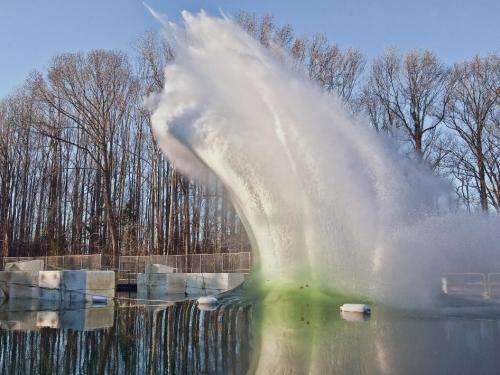Orion drop test on Jan. 06, 2012

(PhysOrg.com) -- After six months of testing, an 18,000 pound (8,165 kg) Orion mockup took its final splash into NASA Langley Research Center's Hydro Impact Basin on Jan. 6.
Orion, the next deep space exploration vehicle, will carry astronauts into space, provide emergency abort capability, sustain the crew during space travel, and ensure safe re-entry and landing.
The testing, which began in July 2011, simulated different water landing scenarios and took into account different velocities, parachute deployments, entry angles, sea states and wind conditions that Orion could face when landing in the Pacific Ocean.
The January 6 test represented worst case landing for an abort scenario in rough seas. The test impact conditions simulated all parachutes being deployed with a high impact pitch of 43 degrees. The capsule traveled approximately 47 mph (75.6 kph) before splashing into the basin and rolling over into the Stable 2 position.
This type of landing scenario isn't likely to occur during actual vehicle operation, but is essential for the validation of analytical models. As was the case with Apollo, the Orion flight design will feature an onboard up-righting system.
Provided by JPL/NASA


















